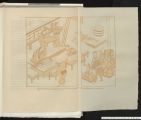| Title |
Old Papermaking |
| Call Number |
TS1090 .H8 1923; Record ID 9911899530102001 |
| Date |
1923 |
| Creator |
Hunter, Dard, 1883-1966 |
| Publisher |
[Chillicothe, O.] 1923. |
| Subject |
Paper; Watermarks |
| Source Physical Dimensions |
22cm x 30cm |
| Type |
Text |
| Format |
image/jpeg |
| Identifier |
TS1090 .H8 1923 |
| Source |
Original book: Old Papermaking |
| Language |
eng |
| Relation |
Is part of the Dard Hunter collection, Marriott Library, University of Utah |
| Collection Name |
Rare Books Collection |
| Holding Institution |
Rare Books Division, Special Collections, J. Willard Marriott Library, University of Utah |
| Rights |
 |
| ARK |
ark:/87278/s6dv1j53 |
| Setname |
uum_rbc |
| ID |
121462 |
| Reference URL |
https://collections.lib.utah.edu/ark:/87278/s6dv1j53 |

































































































































































